Uncategorized
What does Stephen Hawking, Buzz Aldrin, Paul Hebert, Oliver Stone and 10 Nobel Laureates have in common? They will all speak at the Starmus Festival: Life and the Universe in Trondheim, June 18-23, 2017!

Starmus is a grandiose festival. With it’s star-speckled list of speakers and artists, Starmus has as goal to bring an understanding and appreciation of science to the public at large. This is the fourth Starmus festival and as in previous years, astronauts, physicists, astrophysicists, biologists and musicians will be speaking about life, the universe and things that (dark) matter. The program is still under development, but it is already certain that the festival in Trondheim might become a ‘once in a lifetime experience’.
So, what will the ‘father of DNA barcoding’ Paul Hebert speak about in this setting? Could it be the Planetary Biodiversity Mission? The microbiologist Emmanuelle Charpentier, the molecular biologist Susumu Tonegawa, the astrobiologist Nathalie A. Cabrol, the marine biologist Nancy Knowlton and the neurobiologists May-Britt and Edvard Moser are other famous biologists in the program.
In addition, three moonwalkers will have a public conversation about the moon and beyond. That will also be interesting, guaranteed.
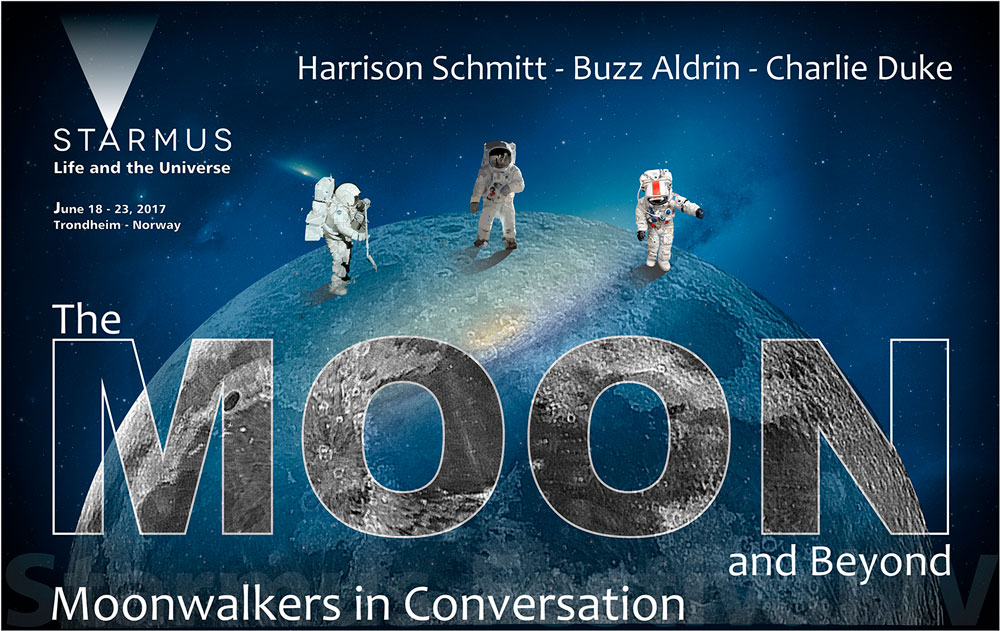
Imagine this: You wake up before the sun rises, find your guide and get set for today’s “morning drive” to watch elephants, lions and rhinoceros as the first rays of sun hit the bushland. You return to the camp and enjoy an excellent breakfast before the first plenary of the day on environmental barcoding of North American wetlands. This dream can come true before you realize: The seventh Barcode of Life conference will be held in Kruger National Park, South Africa, 20-24 November 2017.
 Elephants in South Africa. Photo Torbjørn Ekrem CC-NC-SA.
Elephants in South Africa. Photo Torbjørn Ekrem CC-NC-SA.
The international conferences on DNA barcoding have been held every second year since 2005 (in London) and have continuously increased in size and content. The participants come from all over the world and present their research, educational programs and public outreach initiatives. All aspects of DNA barcoding and metabarcoding are covered and the presentations can include anything from development of methods and taxonomy to citizen science, applied ecology and nature management. The last meeting in Guelph (2015) had 600 participants from 60 countries. Time will tell if the upcoming meeting can beat those numbers…
The scientific program for the meeting is under development, but several invited speakers have already accepted. The theme of the conference will be “Exploring mega-diverse biotas with DNA barcodes”. Registration will open December 1, 2016 and end November 1, 2017. The main lecture hall has room for 700 guests, so the meeting probably will not be fully booked the first week. Nevertheless, it might be a good idea to sign up early!
See you in Kruger!
We congratulate Prof. Henrik Glenner at the Department of Biology, University of Bergen as the winner of NorBOL’s photo challenge! His photo will illustrate the front page of norbol.org.
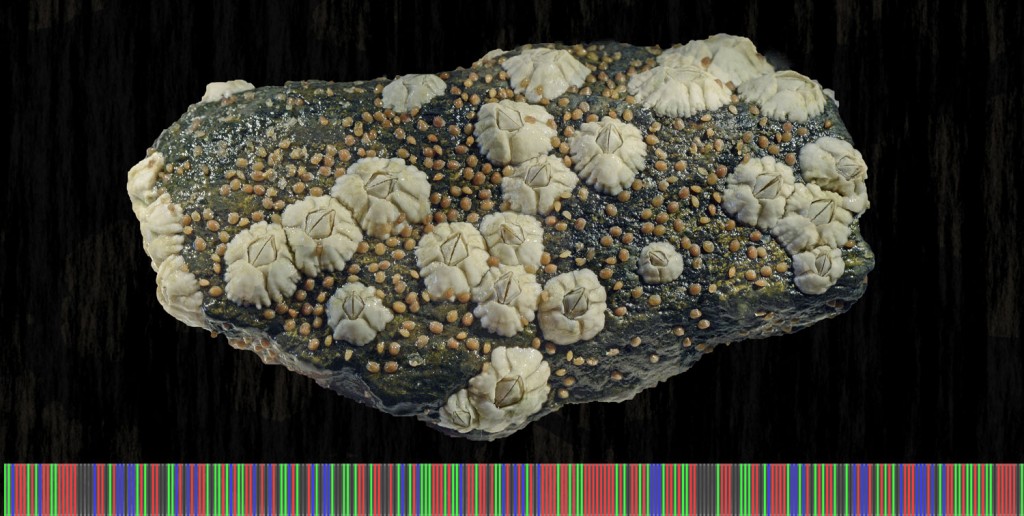 Colony of Semibalanus balanoides with recently settled larvae and associated DNA barcode. Photo: Henrik Glenner CC-BY.
Colony of Semibalanus balanoides with recently settled larvae and associated DNA barcode. Photo: Henrik Glenner CC-BY.
Would you like to see your favorite DNA barcode photo on norbol.org? A beautiful (some think scary) photo has dominated our front page for a while, and it is time for a change. NorBOL is therefore inviting you to a photo/illustration challenge where the winner will have her/his contribution on the front page of norbol.org and receive a #mydnabarcode buff and a #mydnabarcode mug. Send your best photos or illustrations to Torbjørn by the 15th of February to participate. The image must be in landscape format and the winner will be chosen at the NorBOL steering group meeting on March 2. Good luck!
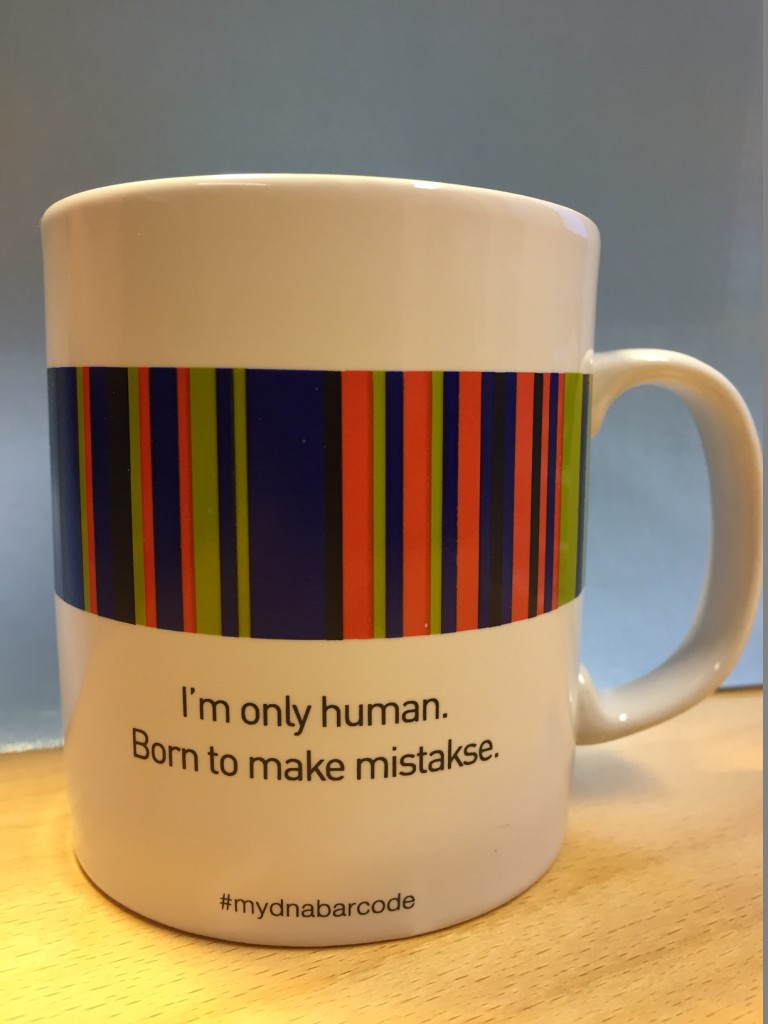
Gunnhild Marthinsen (Natural History Museum Oslo) and Aina Mærk Aspaas (NTNU University Museum) visited Station Linné on Öland in June/July 2015 to sample insects from the Swedish Malaise Trap Project. As part of the collaboration between NorBOL and the Swedish Barcode of Life Initiative (SweBOL), the two barcode managers wanted to sample Nordic insect species that had not already been barcoded from Norway.
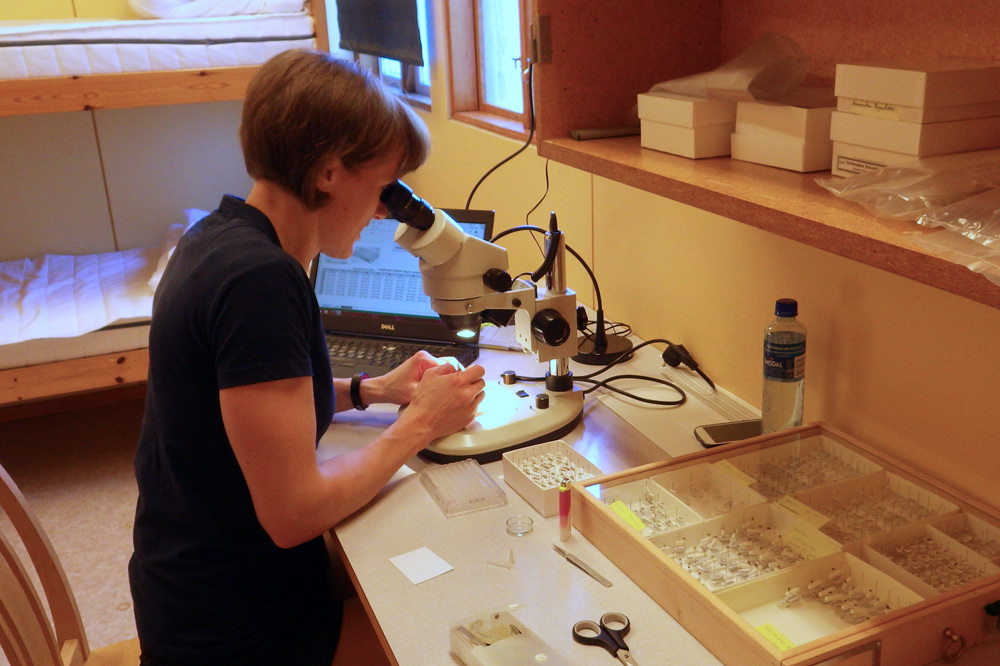 Aina Mærk Aspaas samples insect legs on Station Linné. Photo: Gunnhild Marthinsen.
Aina Mærk Aspaas samples insect legs on Station Linné. Photo: Gunnhild Marthinsen.
By the end of a short week, Aina and Gunnhild had sampled and photographed nearly 600 insects. The samples will be shipped to the Biodiversity Institute of Ontario for DNA analyses in August and results are expected later this autumn.
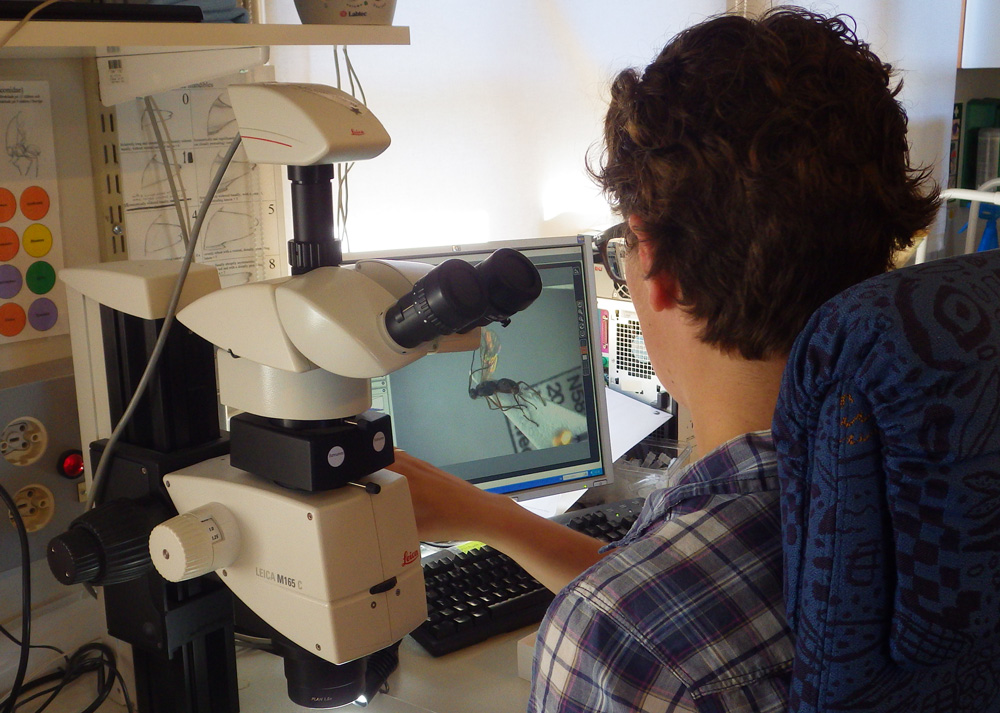 Gunnhild Marthinsen photographs hymenoptera on Station Linné. Photo: Aina Mærk Aspaas.
Gunnhild Marthinsen photographs hymenoptera on Station Linné. Photo: Aina Mærk Aspaas.
Thanks to Pelle Magnusson and Dave Karlsson for all help at the station!
There is an open PhD-position in metabarcoding at the Tromsø University Museum. The PhD position will be connected to two ongoing projects. 1) The Norwegian Barcode of Life (NorBOL): Development of DNA barcodes for vascular plants through low coverage shotgun sequencing of genomic DNA and assemblage of whole plastid DNA genomes, nuclear rDNA and large parts of mitochondrial genome. 2) The After Ice DNA Metabarcoding project (see http://en.uit.no/ansatte/inger.g.alsos) explores the occurrence of boreal species at northern latitudes by ancient DNA analyses using the P6 loop of the plastid DNA trnL (UUA) intron. Lake sediments have been collected at key sites for palaeoenvironmental reconstructions in Norway and Svalbard.
The PhD candidate will bridge these projects by developing laboratory and bioinformatic tools to apply shotgun sequencing on the ancient samples. This will provide valuable data which the candidate will use to explore effects of past climate change on e.g. species turnover, dispersal, extinction, and phylogenetic diversity. In both projects, we collaborate with colleges at the University Joseph Fourier in Grenoble, who run similar projects focused on the Alps, and the candidate is expected to spend a 3-6 month research stay there.
See: http://www.jobbnorge.no/ledige-stillinger/stilling/110289/phd-candidate-in-metabarcoding-at-tromsoe-university-museum
The NTNU University Museum is seeking a highly qualified postdoctoral researcher for a project on environmental barcoding/metabarcoding of freshwater invertebrates. The position is for 3 years, preferably with start June 1, 2015 and is connected to a project funded by the Research Council of Norway and the Norwegian Environment Agency that involves partners from Canada, Germany and Norway.
For more information, please see the full announcement: http://www.jobbnorge.no/ledige-stillinger/stilling/109370
A quite informal photo competition was held as a runner-up for the NorBOL kick-off meeting on March 10, 2014. The best DNA barcode related image, graphic or montage would decorate the NorBOL main web page for some time. Katrine Kongshavn from the University Museum of Bergen won, but there were several great contributions. Here are the three best:
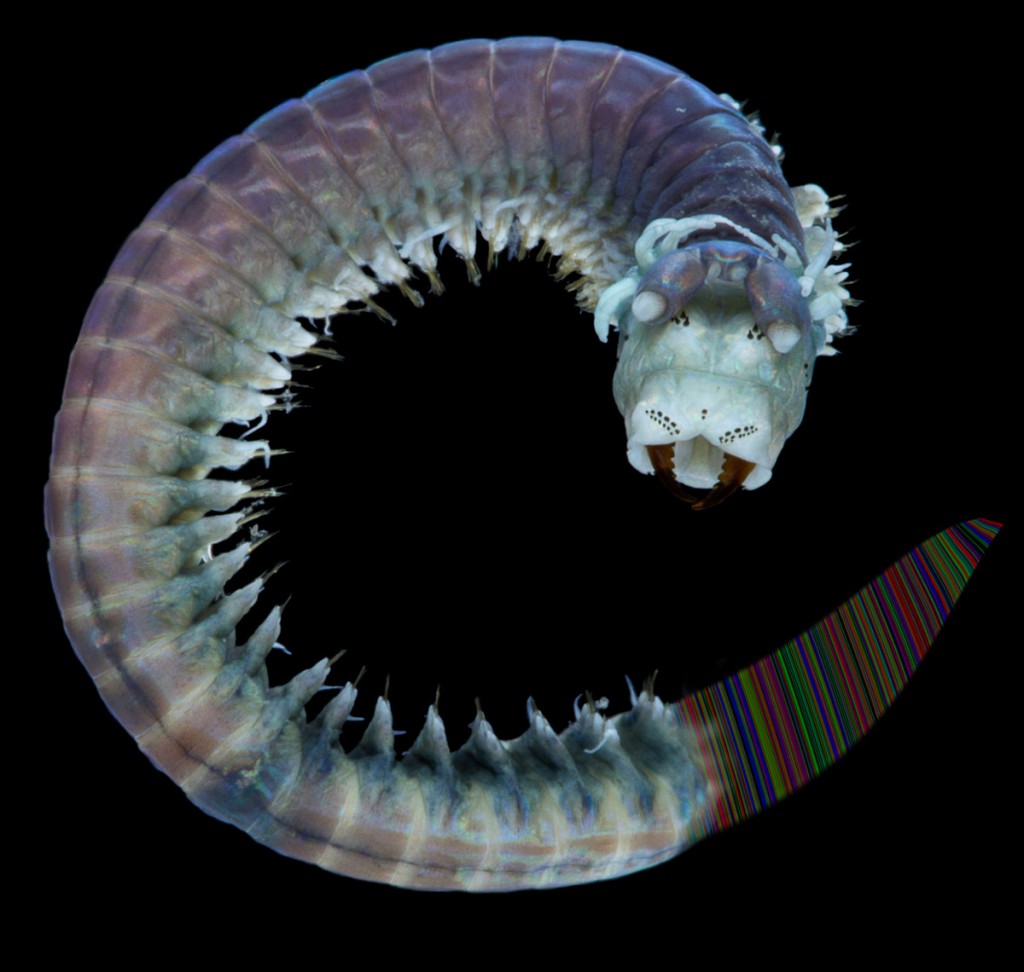
Nereis pelagica fra Sognefjorden. Foto Katrine Kongshavn
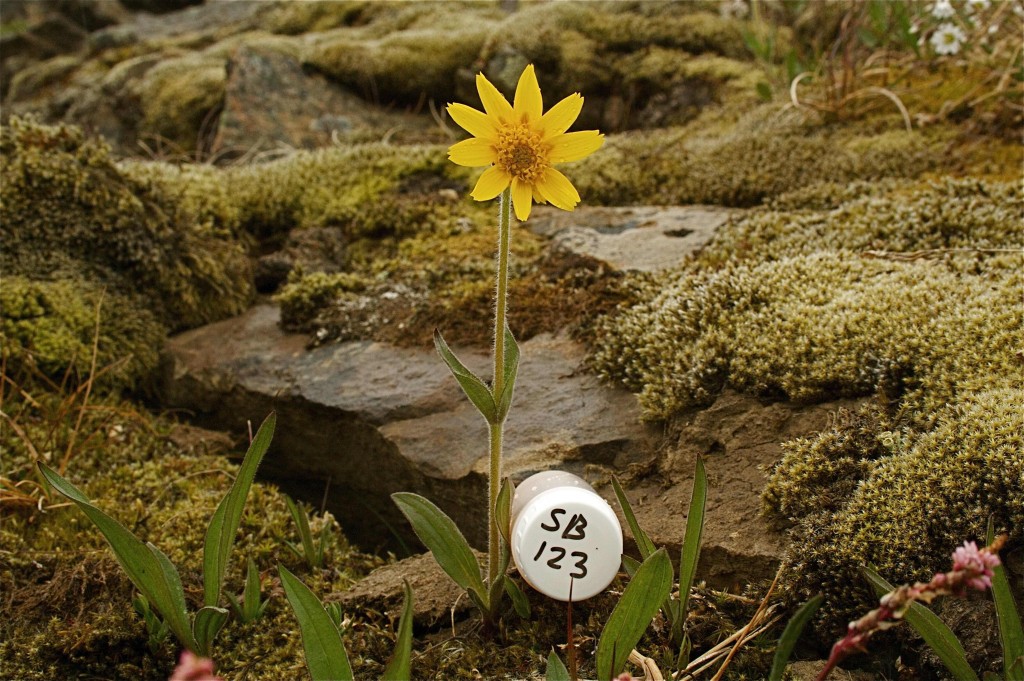
Sample SB_123. Foto Inger G. Alsos
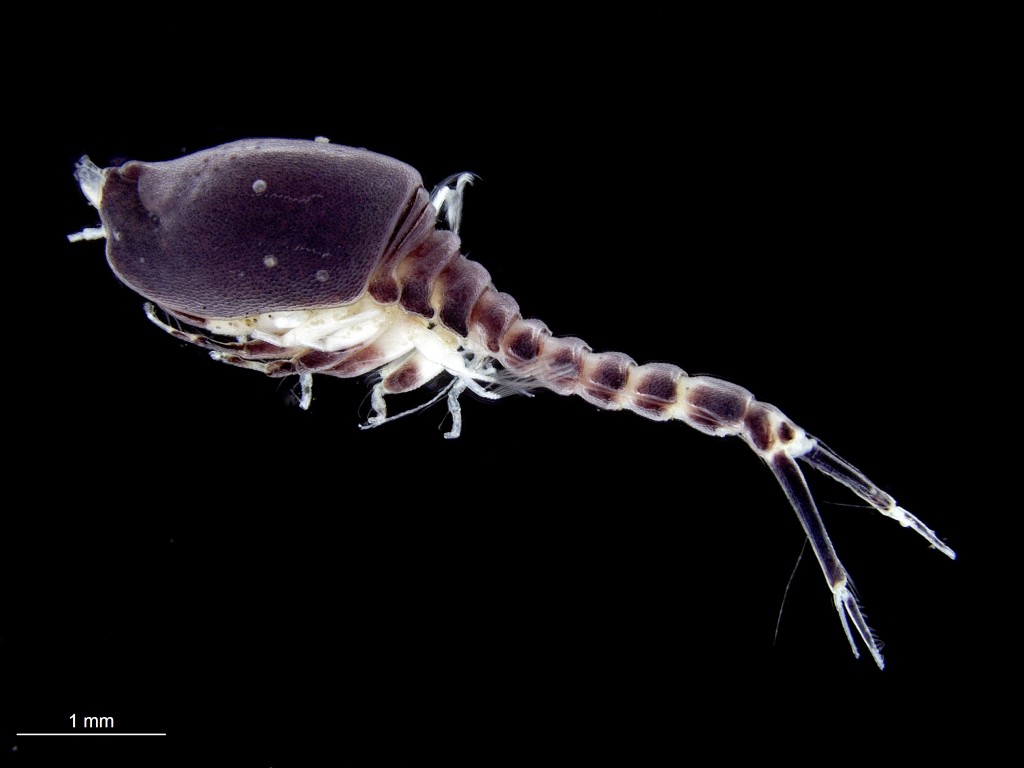
Campylaspis rubicunda (Liljeborg, 1855) (Cumacea). Foto Linn Hagenlund
The Norwegian Barcode of Life Network (NorBOL) recently received notice of new and continued funding from the Research Council of Norway (RCN) and the Norwegian Biodiversity Information Centre (NBIC) for development of NorBOL to a full scale national research infrastructure. The funding period is for five years (2014-2018).
The project will have a strong focus on the further development of an open access barcode library of Norwegian species in Barcode of Life Data Systems, but also capacity building and networking among the NorBOL-partners will have priority. The RCN and NBIC funded project is coordinated by the NTNU University Museum in Trondheim with the main collaborative partners at the University Museum of Bergen, the Natural History Museum i Oslo, the Tromsø University Museum and the Biodiversity Institute of Ontario at the University of Guelph. Other Norwegian collaborators in NorBOL, particularly the research institutes (see list here), will be continue to be very important contributors to he projects as a considerable amount of expertise is located here. All NorBOL partners are invited to join the project’s advisory board while a smaller assemblage of partners will constitute NorBOL’s steering board.
The project has a total budget of c. 100 M NOK over five years. About 70% is estimated in kind support from project partners and associated research and inventory projects. The remaining funding of the project is covered by The Research Council of Norway (25,6 mill.) and the Norwegian Biodiversity Information Centre (4 mill.) and will largely fund four “barcode managers” at the University Museums, project coordination, workshops and parts of the analytical costs related to DNA sequencing and databasing.
Visit norbol.org and follow @norwbol on Twitter for regular updates on the project.
The NTNU University Museum is pleased to invite you to a new workshop on DNA barcoding. The workshop will take place at the Museum’s Department of Natural History in Trondheim 25-27 March , 2014.

The aim of the workshop is to give the participants practical and theoretical knowledge about the use of DNA barcoding in biodiversity studies. Most of the time will be used for practical work on material from own projects. There will be introductory lectures on all topics. A program is available here: Program workshop.
The workshop is funded by NorBOL and will cover travel costs (cheapest option), hotel and food for one person per ongoing project. All participants must bring material for DNA barcoding or DNA sequences and associated data for uploading to their own project in BOLD. Animals, plants or fungi from Norway are relevant for barcoding through NorBOL, especially material from inventory projects with funding from the Norwegian Taxonomy Initiative. The number of participants will be limited to 15, and it is a good idea register early.
Registration is done via e-mail to Elisabeth Stur (elisabeth.stur@ntnu.no) by February 23.
Your email must include:
- Name, address and contact information.
- If you need accommodation.
- How many individuals of which group(s) you plan to process during the workshop.
- What topics you want to learn more about (multiple choice possible):
- Structure of the Barcode of Life Data Systems (BOLD, www.boldsystems.org) and how to start a new project.
- Taking tissue samples, filling of sample plates.
- Imaging and submitting photos to BOLD.
- Submission of own sequences and trace-files to BOLD.
- Sequence/diversity analytical tools in BOLD.
We hope that many of you have the opportunity to attend!
Elisabeth Stur & Torbjørn Ekrem
NTNU University Museum, Department of Natural History, Erling Skakkesgate 47A, Trondheim (see map)

 English
English  Norwegian Bokmål
Norwegian Bokmål 









